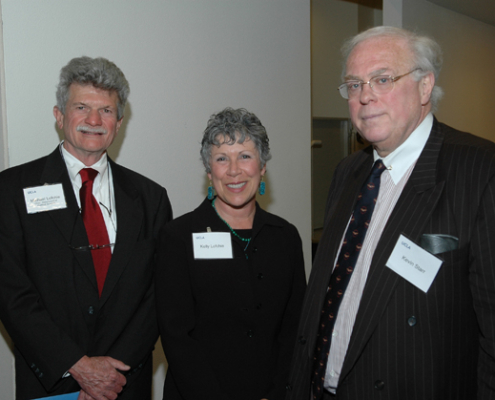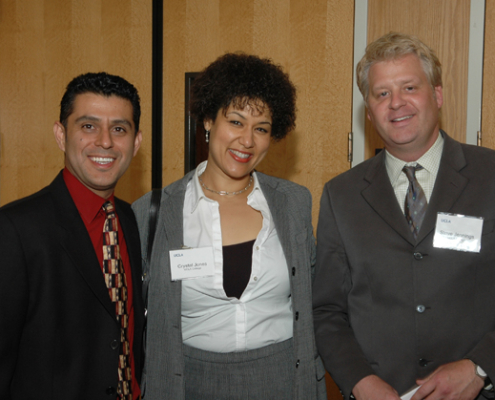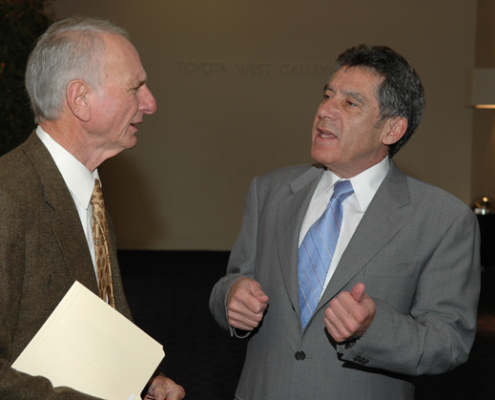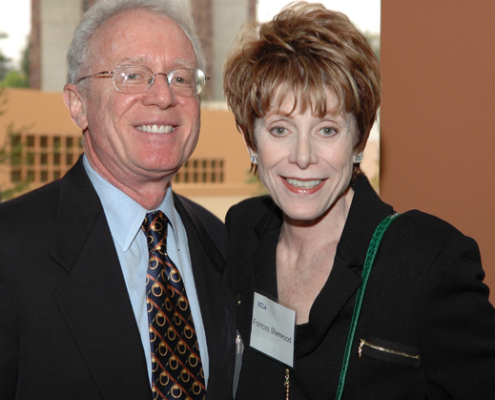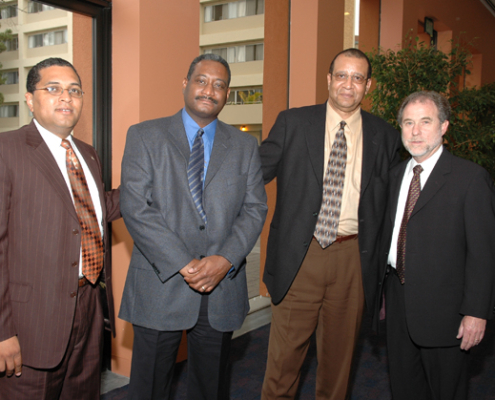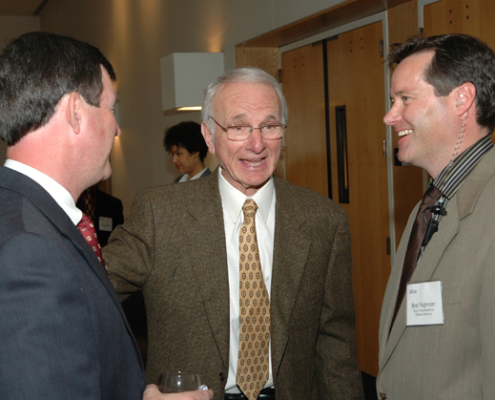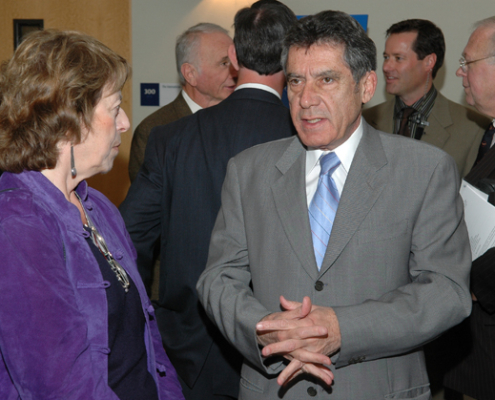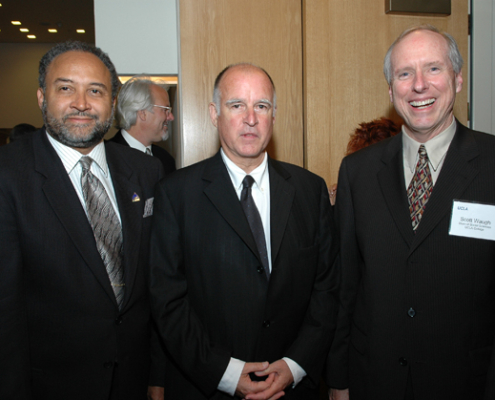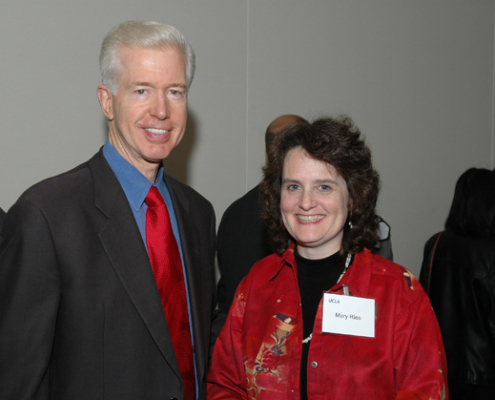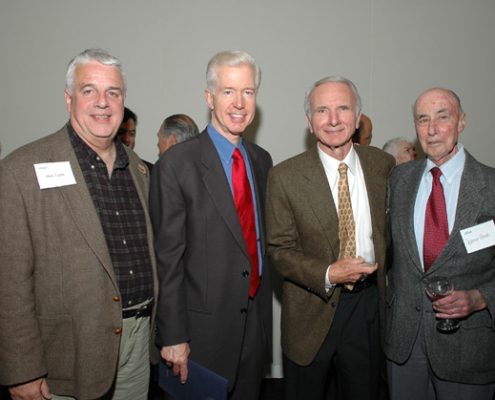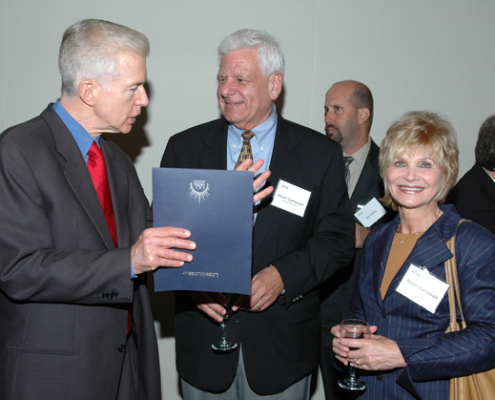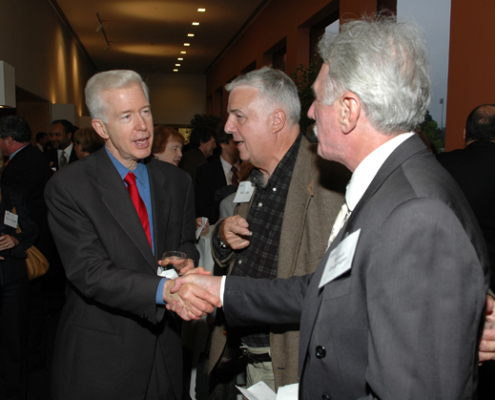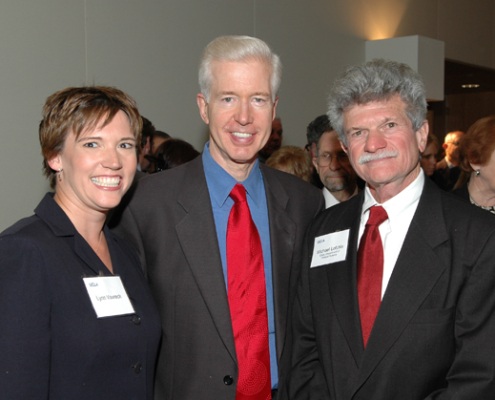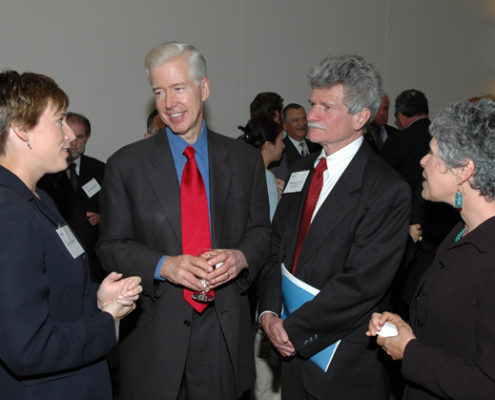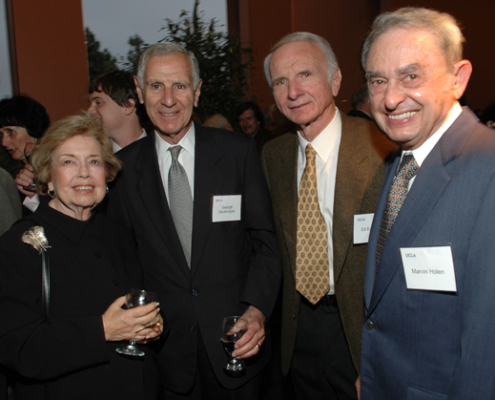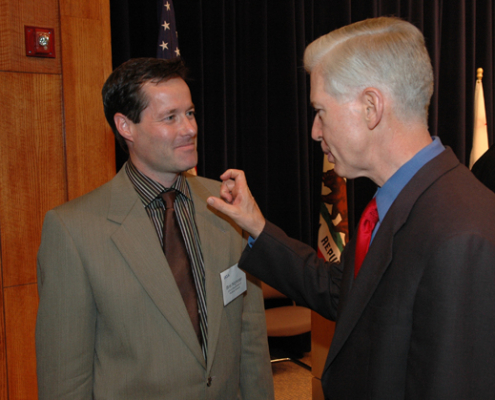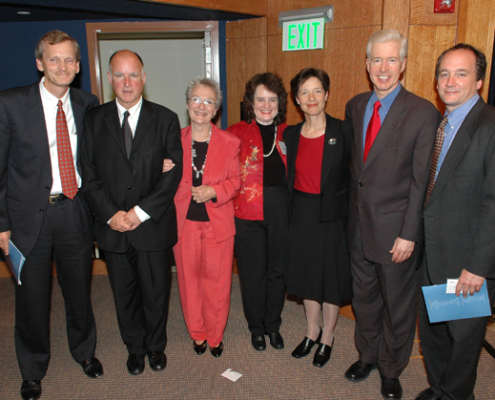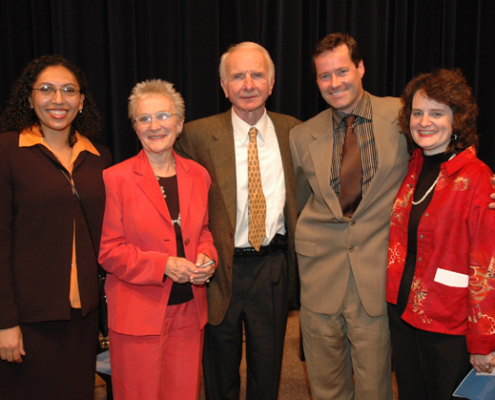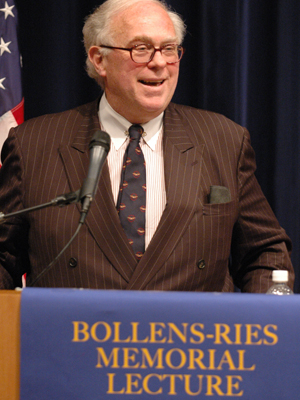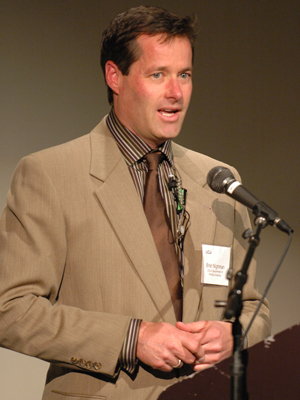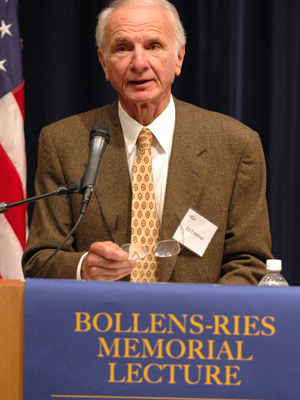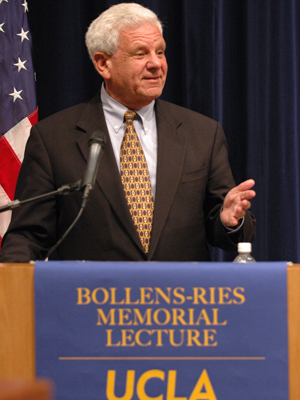20th Bollens-Ries-Hoffenberg Lecture Series
How Can California Government Meet the Challenges of the 21st Century?
Wednesday, May 4, 2005
Lecture Speaker
Jerry Brown

Edmund G. Brown, Jr., known as Jerry, was born in San Francisco on April 7, 1938. He graduated from St. Ignatius High School, studied at the University of Santa Clara and for the Catholic priesthood at the Sacred Heart Novitiate, a Jesuit seminary. He received his B.A. degree in Latin and Greek from the University of California at Berkeley in 1961, and graduated from Yale Law School in 1964.
In 1969 Brown was elected to the Los Angeles Community College Board of Trustees. In 1970, he was elected California Secretary of State. Four years later, he was elected Governor. He was reelected in 1978 by the largest vote margin in California’s history.
As governor, Brown presided over a state where 25% of the nation’s new jobs were created. He established the first agricultural labor relations law in the country, started the California Conservation Corp (CCC), enacted into permanent law the California Coastal Protection Act, halted nuclear power development and made California the leader in solar and alternative energy. He brought more women and minorities into high government positions than any other chief executive, including the first woman, African-American and Latino to the California Supreme Court. Brown also legalized the practice of Acupuncture and strongly supported the rights of chiropractors, osteopaths and lay midwives.
Finally, Brown restructured the California Arts Commission so that it was composed of practicing artists and increased funding by 1300%. As governor, Brown signed into law the removal of criminal penalties for sexual acts between consenting adults.
After his defeat by Pete Wilson in a 1982 U.S. Senate race, Brown spent six months in Japan and worked with Mother Teresa in India. He practiced law in Los Angeles and in 1989 became chairman of the state Democratic Party. He resigned that position in 1991, expressing his disgust with the growing influence of money in politics, and sought the 1992 Democratic Presidential nomination. During that campaign he refused to take contributions larger than $100 and used an “800” number to raise funds. Using this strategy, he beat Bill Clinton in five states.
Brown began broadcast of his radio program, “We the People” with Jerry Brown on January 31, 1994. In 1997, he ran for Mayor of Oakland on a platform of crime reduction, education, downtown revitalization (his “10k Plan”) and a celebration of the arts. He won with 2/3 of the vote. Brown was re-elected in 2002.
Gray Davis

Gray Davis was overwhelmingly elected the 37th Governor of California on November 3, 1998, winning 58 percent of the statewide vote. Despite a wave of Republican victories across the nation in 2002, Davis was re-elected to a second term with 47 percent of the statewide vote. Even as the Recall election was being certified in November 2003, Gray Davis was praised for his statesmanlike and graceful transition, and for his leadership in overseeing the efforts to combat the most extensive wildfires in California history (consuming more than 750,000 acres).
Throughout his tenure, Governor Davis made education his top priority, signing legislation to strengthen California’s K-12 education system, increasing accountability in schools, and expanding access to higher education. These reforms led to the recent improvement in student SAT scores and to the improvement of student achievement scores for five consecutive years.
Governor Davis presided over California during a massive economic expansion that took California’s economy from the 7th to the 5th largest economy in the world. During the economic boom, he made record investments in California’s infrastructure, created four Centers of Science and Innovation on UC campuses, and expanded the state’s Healthy Families program to provide health insurance for an additional 1 million children. In response to the energy crisis which threatened the public’s safety and the state’s economy, Governor Davis utilized emergency powers to streamline the permitting process of power plants without compromising environmental standards. This allowed for the construction of 24 new power plants and added more than 9,000 megawatts of new electricity to California’s energy grid, which helped stabilize the energy market.
Over the course of 28 years in public service, Governor Gray Davis has become known for a quiet tenacity that has made him one of the most effective problem-solvers in California government. Prior to serving as Governor, Davis served one term as Lieutenant Governor from 1995-1999. During this period he focused on his efforts to keep jobs in California and encourage new and fast-growing industries to locate and expand in the state. State Controller (1987-95), State Assemblyman (1983-87) and Chief of Staff to Governor Edmund G. Brown Jr. (1975-1981).
Shaped by his experience as a Captain in the U.S. Army during the Vietnam War, for which he was awarded the Bronze Star, Gray Davis throughout his career fought to provide greater opportunities for the next generation of Californians.
George Deukmejian

George Deukmejian served as Governor of California from January, 1983 to January, 1991.
Prior to his terms as Governor, George Deukmejian served for four years as the state’s Attorney General. Before that, he served in the California State Legislature for 16 years, both in the Senate and the Assembly, where he represented Long Beach and surrounding Southern California communities.
Shortly after leaving the Governor’s office, joined the national and international law firm of Sidley & Austin as a partner in its Los Angeles office for approximately 10 years.
During the Deukmejian administration, California’s international business profile was raised to new heights. The Governor created five foreign trade and investment offices in Tokyo, Hong Kong, London, Frankfurt and Mexico City, personally leading trade missions and holding talks with heads of state in these and other international business capitals.
His tenure was also highlighted by over $90 billion in planned investments in California’s public facilities, as well as tax, budgetary and regulatory policies which established a positive business climate in the state. As a result, California led the nation in major new business expansion, the growth in small businesses and nearly three million new jobs were created with California becoming one of the ten largest economics in the entire world.
A native of New York State, he was educated at Siena College and St. John’s University Law School.
George Deukmejian and his wife, Gloria, reside in Long beach, California, have three children and five grandchildren.
Lecture Moderator
Kevin Starr

Dr. Kevin Starr, the seventh State Librarian of California since the turn of the century, was born in San Francisco in 1940. After graduation from the University of San Francisco in 1962, Starr served two years as a lieutenant in a tank battalion in Germany. Upon release from the service, Starr entered Harvard University where he took his MA degree in 1965 and his PhD in 1969 in American Literature. He also holds the Master of Library Science degree from UC Berkeley and has done post-doctoral work at the Graduate Theological Union. Starr has served as Allston Burr Senior Tutor in Eliot House at Harvard, executive assistant to the Mayor of San Francisco, the City Librarian of San Francisco, a daily columnist for the San Francisco Examiner, and a contributing editor to the Opinion section of the Los Angeles Times. He currently holds the rank of University Professor at the University of Southern California in Los Angeles. The author of numerous newspaper and magazine articles, Starr has written nine books, six of which are part of his American and the California Dream series. His writing has won him a Guggenheim Fellowship, membership in the Society of American Historians, and the Gold Medal of the Commonwealth Club of California.

